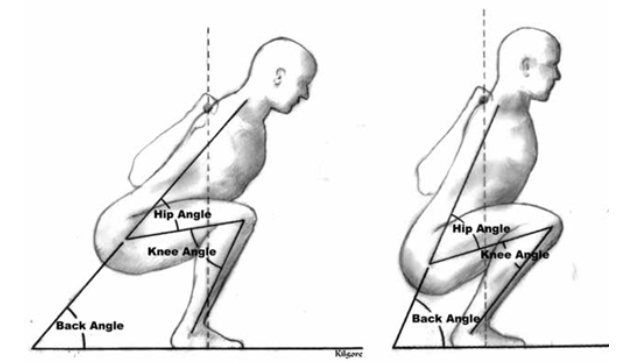High, Low, Gains Wherever You Go - High Bar & Low Bar Squat
If you are looking to make your workouts involving squats really count, I invite you to have a look at this post to learn about high bar squats vs low bar squats.
For this exercise, you will simply need a barbell and the ability to squat down with the barbell on your back. You should warm up with light exercise to elevate your heart rate as well as perform lower body stretches, specifically ones that target your glutes, quadriceps, hamstrings, and hips. These aforementioned lower body muscles will be essential in making sure this exercise can be done for the most effective and safe workout.
When looking at the two variations of the barbell squat, the difference isn't all that large. However, a couple of notable differences should be acknowledged in order to utilize these exercises to their potentials!
In the high bar squat, the barbell will rest on your trapezius muscles, the ones just below your neck, and you should be able to have a relaxed grip on the barbell with your hands. Prior to descending in the squat, brace your core and keep your torso upright. As you descend, drop your hips down, like you are sitting in a chair, and then, once they pass just below parallel, begin rising back up, pushing with your quadricep muscles.
In slight contrast, the low bar squat has the barbell positioned below the trapezius muscles and unlike the high bar squat, the hands cannot be as relaxed within the grip. Because the barbell is not resting on your upper back muscles, the hands will be pushing the barbell up against your back, not with uncomfortable force but enough that the barbell sticks and doesn't wobble as you perform your repetitions. Your repetition sequence form will look identical as your high bar squat, in terms of descending with a braced core and returning to the top once you go past parallel with the hips, but because of the barbell's position in this variation, you will be leaning slightly forward to compensate for the barbell being lower down your back. As a result, this variation will work your glutes and hamstrings more as compared to the high bar squat.
Regardless of which squat variation you choose to use, make sure you can do at least 10 repetitions with just the barbell on your back before adding weight onto the barbell. Additionally, when you do add weight, ensure you add the same amount to both sides of the barbell, otherwise the barbell could become unbalanced and result in possible injury for the user.
I hope you learned some key differences between these two squat formats. I truly believe there is room for both of them in any exercise regiment and making using of both them equally will give you better results, when it comes to becoming strong and powerful in your squat overall!

Author Freddie Aziz
Post High, Low, Gains Wherever You Go - High Bar & Low Bar Squat
- Cursing or hateful contents
- Sexual contents
- Spam or repetitive posting
- Violation of privacy policy
- Slandering of someone in particular
- Others
False reporting may result in
service restrictions.
